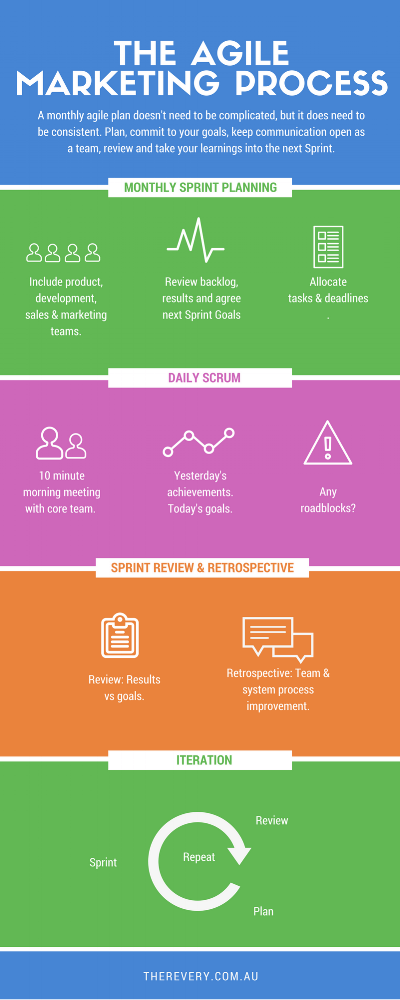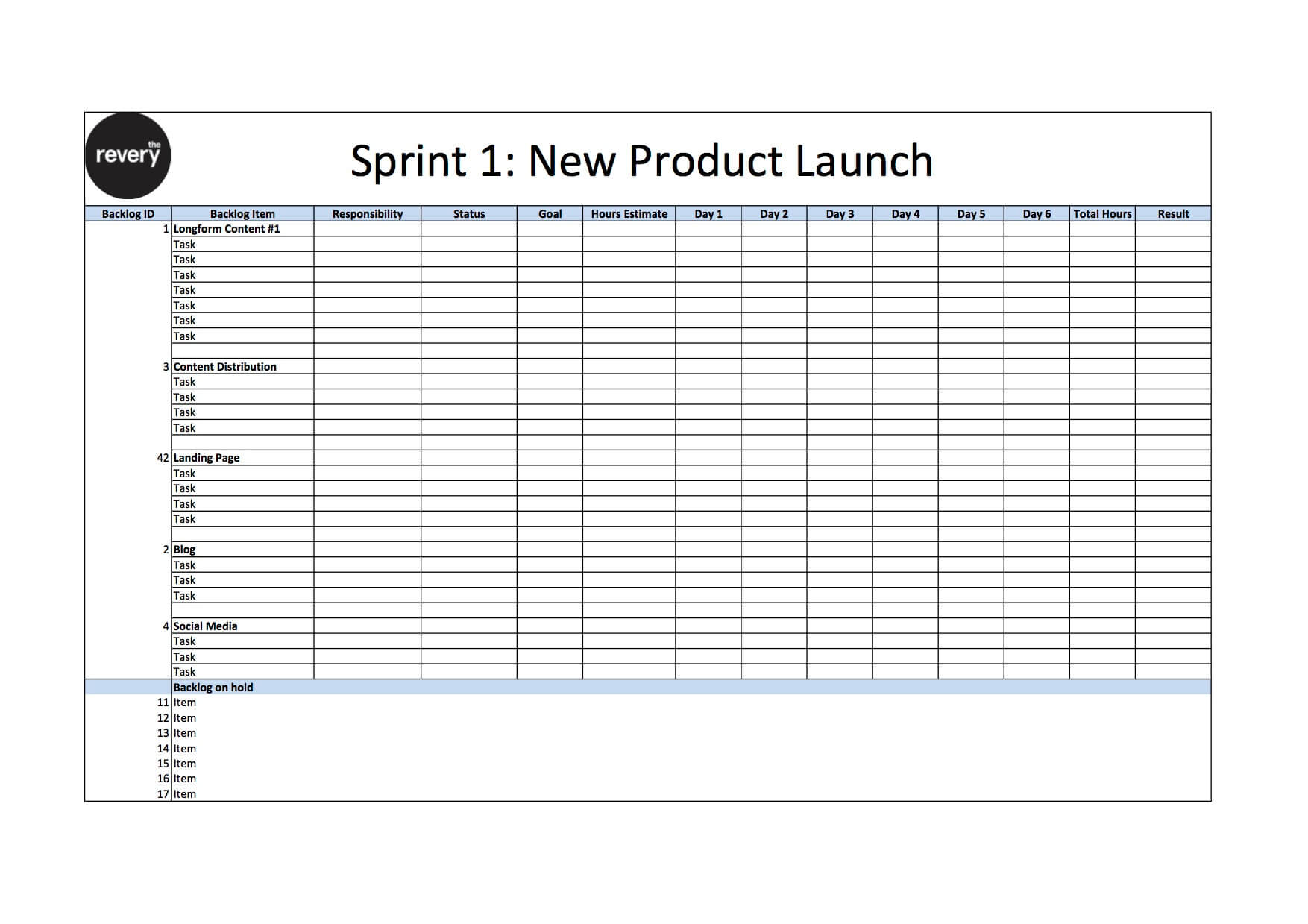As a tech company you work in agile environment, you sprint, you scrum, you roll with the punches.
So why isn’t your marketing plan agile?
Traditional marketing plans are designed to give businesses and their marketing agencies predictability and control over resources, budgets and activity for a full year. They’re plotted, planned and mapped within an inch of their life and then they are locked in.
While a solid, long-reaching plan may work for traditional goods and service industries, in the fast moving world of tech and SaaS, it removes the ability to learn and adapt to an environment that is constantly changing. Enter the Agile Marketing Plan.
What are the benefits of an agile marketing plan?
-
Businesses are empowered to respond faster to market changes
Marketers are no longer locked in to activity agreed upon in a boardroom 12 months ago. They can quickly adapt to changing business and market priorities.
-
Marketing activity is tested and optimised over time
Just because delivery is fast, doesn’t mean the effects of the activity are only for the short-term. Repeat iterations mean content can be optimised and reused; its power compounded over long periods of time. -
The marketing silo is gone
Agile marketing is collaborative across the business, breaking down walls between product, development, sales and marketing for true team collaboration.
-
Agile encourages creativity and out of the box ideas
The agile environment naturally encourages fast, solutions focused thinking. Marketers are no longer encumbered by “This is the way we’ve always done it.”
-
Agile is predictable
Yes, agile is fast moving but goals, tasks and responsibilities are clearly defined. Everyone in the business knows how they fit in the plan and what they need to achieve. -
Agile is customer focused
Every goal, Sprint or task defined in an agile plan is backed by data. There is no room for gut feelings, just what the customer is telling you through their engagement.
-
Agile avoids scope creep
The bane of the traditional marketer’s life is scope creep. Suddenly, despite long-term planning, new items get added to the to-do list and priorities become unclear.Agile marketing provides simple, immoveable goals. They are the sole focus for the sprint period and then reviewed and revised. All additional items that may arise are put aside for review at the end of each sprint.
What does an agile marketing plan look like?
An agile marketing plan comes in three phases – Planning, Sprint, Review. And the fourth – Repeat.

Phase 1: Monthly Sprint Planning
Running a planning session every month for your business may initially sound daunting if you’re not already working in an agile environment but as regular, focused sessions you’ll find they are by far the most productive marketing planning sessions you’ve ever had.
Every decision is based on data, not assumptions and every conversation. Actual results not assumptions. This stage should belong to the broader company – business owners, product, marketing, development and sales.
In marketing terms the sprint is a set piece of time to deliver on an objective. In traditional marketing it would be a ‘campaign’, but it can also be a piece of a larger ongoing sprints should run no longer than 4 weeks. The duration will depend on you and your team. You’ll soon find a time that feels right, but usually it’s 2-4 weeks.
1. Create the backlog
Most teams will have some form of backlog ready to go. This is a list of strategic marketing activity that needs to be assessed and prioritised for each sprint. Some of the activity may never happen, some of the activity may be repeated. That can be decided upon in the monthly planning meetings.
The backlog will grow, shift and adapt in time. Once a sprint is up and running it is important to ignore the backlog. The time for review is at the end and beginning of each Sprint. To dip into the backlog during a sprint is to invite scope creep.
The backlog may include items such as:
-
PPC
-
PR
-
Events
-
Display
-
SEO
They can be assets that have already been created, blue sky ideas or broad tasks that require further definition.
2. Take your learnings
Take the actual versus expected results from the previous sprint and review them in the context of your current business challenges and opportunities. What is the market doing now? What can we learn from customer engagement in the last sprint?
3. Agree on realistic goals
Once you have reviewed the results and the internal and external environment, agree on the next high value goal for the next sprint.
4. Allocate
Once the goals are agreed upon prioritise your backlog of pieces, allocate specific tasks and individual goals and agree upon time to be spent on each for resource allocation.
You will end up with a sprint plan that looks something like this:

Phase 2: Daily scrum
This is the fun bit. Start the mornings with a 10 minute scrum of the key team players. Those people actually doing the marketing work. Each person will report on what they achieved the day before, what they will achieve today and any roadblocks. Scrums are highly effective in ensuring that sprints stay on track and don’t get bogged down in scope creep or productivity issues.
Phase 3: Sprint Review and Retrospective
At the end of each sprint gather the team for a two-part analysis.
Review
The review is a time to gather and analyse the results. How did we go? Did we meet our goals? Did it take the time we expected?
Retrospective
The retrospective is a safe place for the broader group to review how the team worked and create continuous process improvements within the team. How could we have done this better? What’s getting in our way?
This is a positive internal review, not a finger pointing exercise and if done well creates an unbeatable team focused on continuous improvement. Make sure every team member has a chance to contribute.
As anyone who has worked within the agile methodology for any project knows, it is an empowering process. The big surprise is that some tech companies are still trying to fit their agile shaped products into a traditional marketing plan hole.




